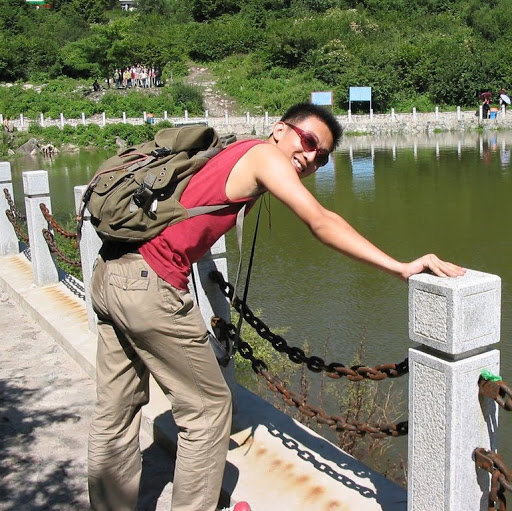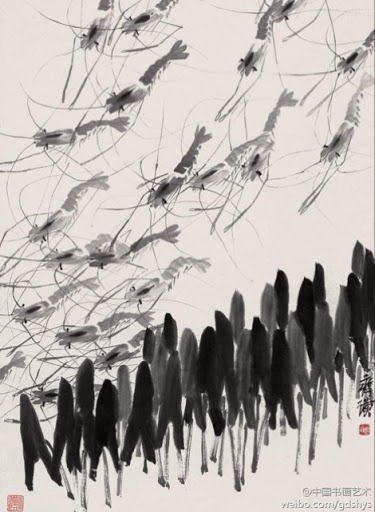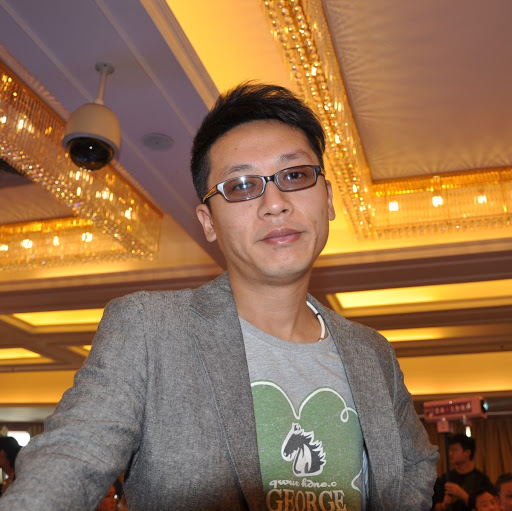Liang Tsai Cheng
age ~93
from El Cerrito, CA
- Also known as:
-
- Liang T Cheng
- Liangtsai T Cheng
- Tsai Cheng Liangtsai
- Liang-Tsai Cheng
- Tsai Cheng Liang
- Cheng Liang-Tsai
- Cheng A
Liang Cheng Phones & Addresses
- El Cerrito, CA
- 3436 Arnold Heights Ter, Portland, OR 97219 • (503)2939248
- 1919 Hopkins St, Berkeley, CA 94707 • (503)7018268
- Milpitas, CA
- Bala Cynwyd, PA
- 1919 Hopkins St, Berkeley, CA 94707 • (503)2939248
Work
-
Position:Building and Grounds Cleaning and Maintenance Occupations
Education
-
Degree:Graduate or professional degree
License Records
Liang Yong Cheng
License #:
008920
Category:
Clinical Laboratory Technologist
Issued Date:
Feb 13, 2007
Type:
CLINICAL LABORATORY TECHNOLOGIST
Medicine Doctors

Liang Cheng
view sourceSpecialties:
Anatomic Pathology & Clinical Pathology
Work:
IU Health Pathology Laboratory
350 W 11 St RM 4010, Indianapolis, IN 46202
(317)4916000 (phone), (317)4916419 (fax)
350 W 11 St RM 4010, Indianapolis, IN 46202
(317)4916000 (phone), (317)4916419 (fax)
Education:
Medical School
Beijing Med Univ, Beijing City, Beijing, China
Graduated: 1987
Beijing Med Univ, Beijing City, Beijing, China
Graduated: 1987
Languages:
English
Description:
Dr. Cheng graduated from the Beijing Med Univ, Beijing City, Beijing, China in 1987. He works in Indianapolis, IN and specializes in Anatomic Pathology & Clinical Pathology. Dr. Cheng is affiliated with Indiana University Health Methodist Hospital, IU Health University Hospital and Riley Hospital For Children At Indiana University Health.
Us Patents
-
Video Rate Control Processor For A Video Encoding Process
view source -
US Patent:20100124279, May 20, 2010
-
Filed:Nov 19, 2008
-
Appl. No.:12/274237
-
Inventors:Harikrishna Madadi Reddy - San Jose CA, US
Himadri Choudhury - Santa Clara CA, US
Manindra Parhy - Fremont CA, US
Liang Cheng - San Jose CA, US -
Assignee:NVIDIA CORPORATION - Santa Clara CA
-
International Classification:H04N 7/26
-
US Classification:37524016, 375E07104, 375E07011
-
Abstract:A system for executing video encoding operations. The system includes a video encoder for encoding an incoming video stream into a plurality of macro blocks. A motion estimation engine is coupled to the video encoder for controlling the encoding of the macro blocks. A video rate control processor is coupled to the video encoder and coupled to the motion estimation engine. The video rate control processor receives a plurality of parameters from the video encoder that indicate an encoding complexity for a macro block and a video frame of the video stream and, upon receiving an indication from the motion estimation engine, computes a quantization parameter for the macro block. The quantization parameter is dynamically adjusted for the video stream to achieve a target bit rate.
-
Light Valve Projector Assembly Including Fiber Optic Plate With Fiber Bundle Perimeter Less Than Twice As Reflective As Elsewhere
view source -
US Patent:53942540, Feb 28, 1995
-
Filed:Jan 3, 1994
-
Appl. No.:8/176882
-
Inventors:Liang T. Cheng - Portland OR
-
Assignee:Greyhawk Systems, Inc. - Mountain View CA
-
International Classification:G02F 11335
G02F 1135 -
US Classification:359 42
-
Abstract:A liquid crystal light valve projector assembly is disclosed here including (1) a multi dashed layered liquid crystal light valve having a light-writing side and a light projecting side, (2) light-writing means for producing modulated writing light representative of a given image, which writing light when written onto the light-writing side of said light valve causes the latter to modulate in a corresponding manner, and (3) light projecting means cooperating with the light-projecting side of said light valve for projecting a correspondingly modulated projection light beam onto a projection plane for visually displaying the given image. In addition to the components just recited, the liquid crystal light valve projector assembly disclosed here in also includes the fiber optic plate arrangement which is provided for coupling the light-writing means, for example a cathode ray tube, to the light valve and which is specifically designed to eliminate from the ultimately projected image the faint honeycomb pattern known as the "chicken wire effect". This is accomplished by polishing the fiber optic plate surfaces into smooth surfaces in which the reflectance at the outer perimeter of optical fiber bundles within each surface is less than twice the reflectance at any other position within a corresponding optical fiber bundle.
-
Textile-Material Model For Vibroacoustic Structural Simulation
view source -
US Patent:20220188475, Jun 16, 2022
-
Filed:Dec 15, 2020
-
Appl. No.:17/122180
-
Inventors:- Mountain View CA, US
Arun Prakash Raghupathy - Pleasanton CA, US
Ayyana Mori Chakravartula - Piedmont CA, US
Darren Torrie - Mountain View CA, US
Janet P. Ho - San Francisco CA, US
Liang Cheng - Santa Clara CA, US
Neha Ravi Dixit - Santa Clara CA, US
Paul L. Briant - San Carlos CA, US
Kaitlin S. Spak - Arvada CO, US
Gunjan Agarwal - Mountain View CA, US
Daniel Mennitt - Lakewood CO, US -
Assignee:Google LLC - Mountain View CA
-
International Classification:G06F 30/20
G10L 25/51 -
Abstract:The present document describes techniques associated with a textile-material model for vibroacoustic structural simulation. The techniques described herein provide a nontrivial methodology to test a textile and simplify its representation, which can enable prediction of acoustic performance (e.g., rub and buzz) of an electronic-speaker device having a textile mounted thereon. The textile is modeled as a textile-material model based on an elongation stiffness obtained from a time-temperature superposition curve of the textile, which is based on a dynamic mechanical analysis test of the textile in each of course and wale directions. The textile-material model is then applied to an assembly model of the electronic-speaker device to simulate a vibroacoustic response of the textile relative to the assembly model to predict a likelihood of rub and buzz.
-
System And Method For Detecting Excessive Vibration In A Consumer Device Using Computerized Modeling
view source -
US Patent:20210365613, Nov 25, 2021
-
Filed:May 21, 2020
-
Appl. No.:16/880750
-
Inventors:- Mountain View CA, US
Liang Cheng - Mountain View CA, US -
International Classification:G06F 30/23
G01M 7/02
G06F 30/10
H04R 29/00 -
Abstract:Systems and methods are provided for evaluating a device design to reduce audio speaker generated vibrational energy transfer between adjoining components of a device. The method performs a system-level modal analysis on the design to extract a natural frequency and a mode shape and thereafter create an analysis monitoring point on the design between two adjacent components defining a relative distance. Simulation inputs are fed into a linear dynamics finite element analysis (FEA) solver to solve system equations for a relative displacement of the two adjacent components at the analysis monitoring point, and if the solved relative displacement causes the relative distance to be equal to or less than a zero-relative distance value, then the device design is modified by at least one value of an element from one of the two adjacent components.
-
Drop Protection For Display Assistant Device
view source -
US Patent:20200110441, Apr 9, 2020
-
Filed:Oct 8, 2019
-
Appl. No.:16/596711
-
Inventors:- Mountain View CA, US
Carl CEPRESS - Los Altos CA, US
Chih-min CHIEN - Taipei City, TW
Liang CHENG - Fremont CA, US
Justin LEONG - Milpitas CA, US
Xiaoping QIN - San Jose CA, US -
International Classification:G06F 1/16
G02F 1/1333
G02F 1/1337 -
Abstract:In a display assistant device, a display panel assembly has a plurality of first retention elements, and each first retention element is formed on a rear surface of the display panel assembly and adjacent to a respective first edge of the display panel assembly. A back cover is configured to hold the display panel assembly using a plurality of second retention elements. Each second retention element is arranged adjacent to a respective second edge of the back cover. When mated to each other, the first and second retention elements are configured to control an in-plane displacement of each second edge of the back cover in response to an impact of a force on the second edges, thereby limiting an out-of-plane displacement of each second edge of the back cover and protecting the first edges of the display panel assembly from falling apart from the second edges of the back cover.
Resumes

Senior Software Engineer At F5 Networks
view sourcePosition:
Senior software engineer at F5 networks
Location:
San Francisco Bay Area
Industry:
Internet
Work:
F5 networks since May 2011
Senior software engineer
NVIDIA Apr 2005 - Apr 2011
Senior video architect
Skyworks Solutions, Inc. 2002 - 2002
Intern
Senior software engineer
NVIDIA Apr 2005 - Apr 2011
Senior video architect
Skyworks Solutions, Inc. 2002 - 2002
Intern
Education:
University of California, Irvine 2000 - 2005
Ph.D., Computer Science Beijing University of Post and Telecommunications
Ph.D., Computer Science Beijing University of Post and Telecommunications

Video Architect
view sourcePosition:
Video Architect at nvidia
Location:
San Francisco Bay Area
Industry:
Semiconductors
Work:
nvidia since 2005
Video Architect
Video Architect
Education:
University of California, Irvine 2000 - 2005
Ph.D., Computer Science Beijing University of Post and Telecommunications 1997 - 2000
M.S., Telecomm. Beijing University of Post and Telecommunications 1993 - 1997
B.S., Telecomm.
Ph.D., Computer Science Beijing University of Post and Telecommunications 1997 - 2000
M.S., Telecomm. Beijing University of Post and Telecommunications 1993 - 1997
B.S., Telecomm.

Liang Cheng
view sourceLocation:
United States
Flickr
Plaxo

Heng Cheng Liang
view sourcePast: Vice President - Global Project Mgmt at Molex, Vice President - Human Resources at Molex... A Senior HR professional with over 20 years of HR experience at local, regional and global level. Move into project management role in year 2008 to gain... A Senior HR professional with over 20 years of HR experience at local, regional and global level. Move into project management role in year 2008 to gain experience in operations and business.

Liang CHENG
view sourceIU

Liang Mu Cheng
view source
Liang Cheng
view source
Liang Geok Cheng
view source
Liang Mu Cheng
view source
Liang Mu Cheng
view source
Liang Cheng Lin
view source
Liang Mu Cheng Cheng
view source
Liang Sing Cheng
view sourceGoogleplus

Liang Cheng

Liang Cheng

Liang Cheng

Liang Cheng

Liang Cheng

Liang Cheng

Liang Cheng

Liang Cheng
Classmates

School for the Physical C...
view sourceGraduates:
Lennie Ortiz (1993-1997),
Sarah Blonstein (1993-1999),
Oscar Pinckney (1996-2002),
Kavata Washington (1998-2001),
Cheng Liang (1995-2001)
Sarah Blonstein (1993-1999),
Oscar Pinckney (1996-2002),
Kavata Washington (1998-2001),
Cheng Liang (1995-2001)

DePauw University, Greenc...
view sourceGraduates:
Cheng Liang (2001-2005),
Rodney Dore (1960-1964),
Ashley Alles (2004-2008),
Ronald Wacker (1964-1968),
Traci Phillips (1999-2003),
Bruce Bonebrake (1982-1986)
Rodney Dore (1960-1964),
Ashley Alles (2004-2008),
Ronald Wacker (1964-1968),
Traci Phillips (1999-2003),
Bruce Bonebrake (1982-1986)
Myspace
Youtube
Get Report for Liang Tsai Cheng from El Cerrito, CA, age ~93









![SHE - Xing Guang [Starlight] SHE - Xing Guang [Starlight]](https://i.ytimg.com/vi/-Rl9-lGjPAc/0.jpg)



